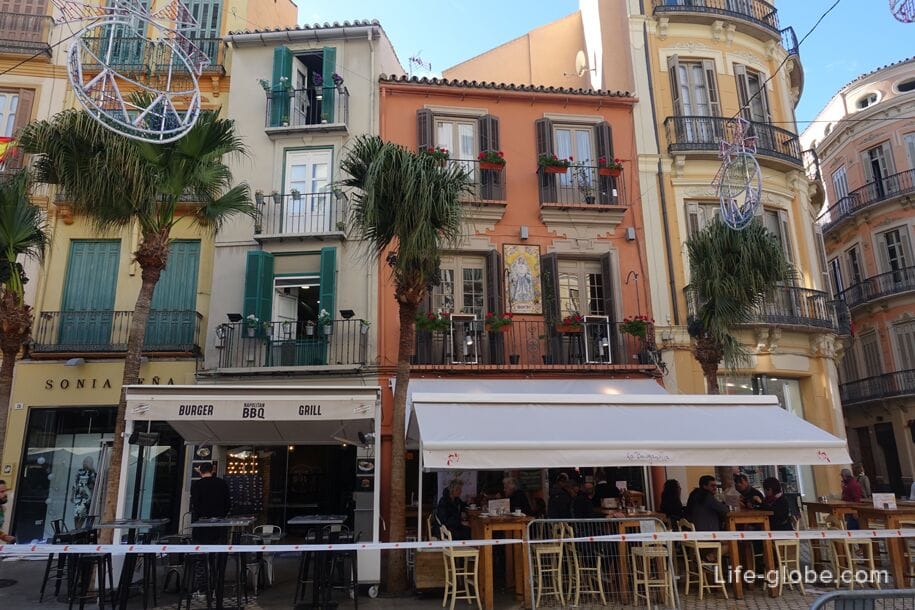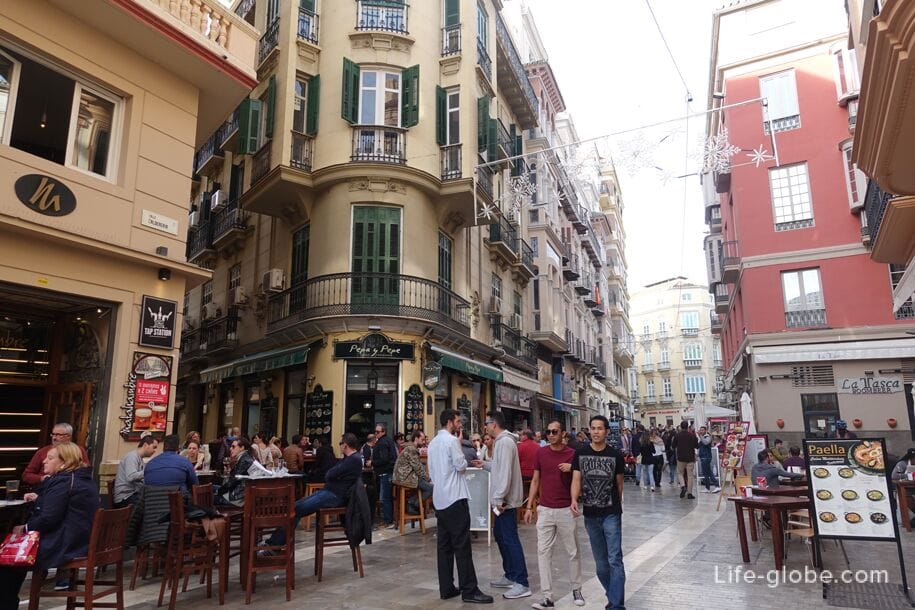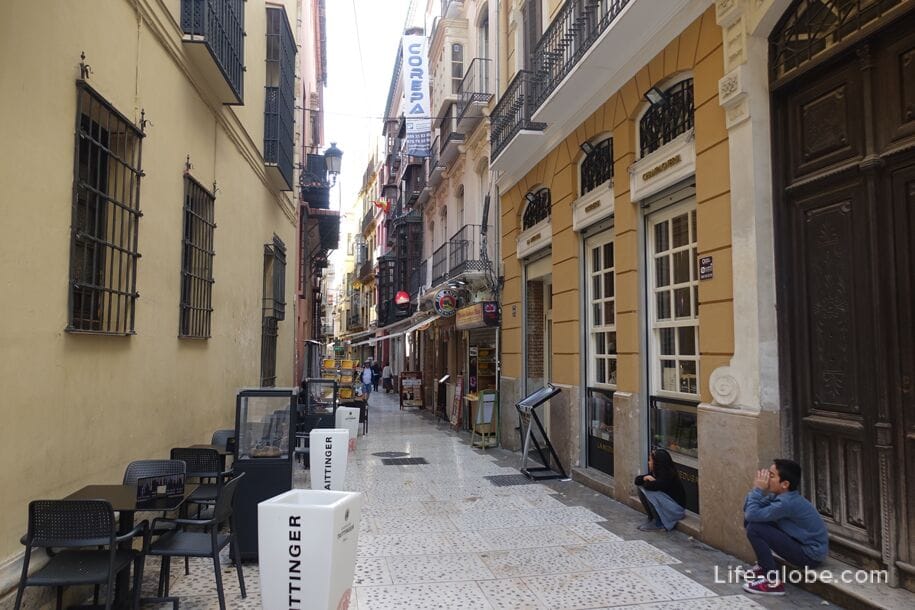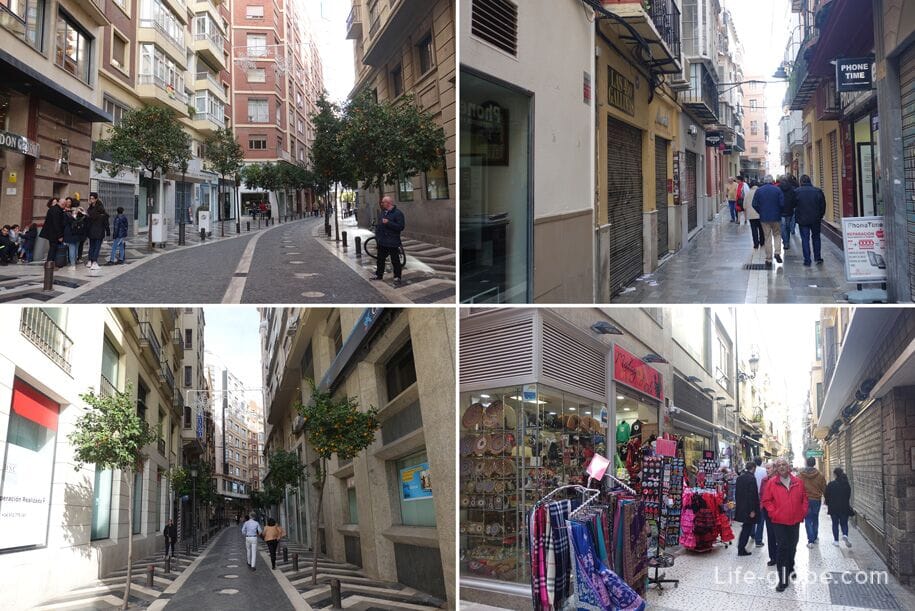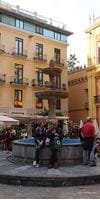The old town of Malaga - the historical center and heart of the city.
The old town of Malaga is very compact, it is easy to get around on foot in one day. However, despite its small size, it is here that most of the historical monuments and sights of the city are concentrated.
The streets of the historic center of Malaga are basically narrow and impressive. On the streets: historic buildings, museums and churches, as well as small squares with an abundance of cafes and restaurants, shops and boutiques, salons and banks, night clubs and souvenir shops.

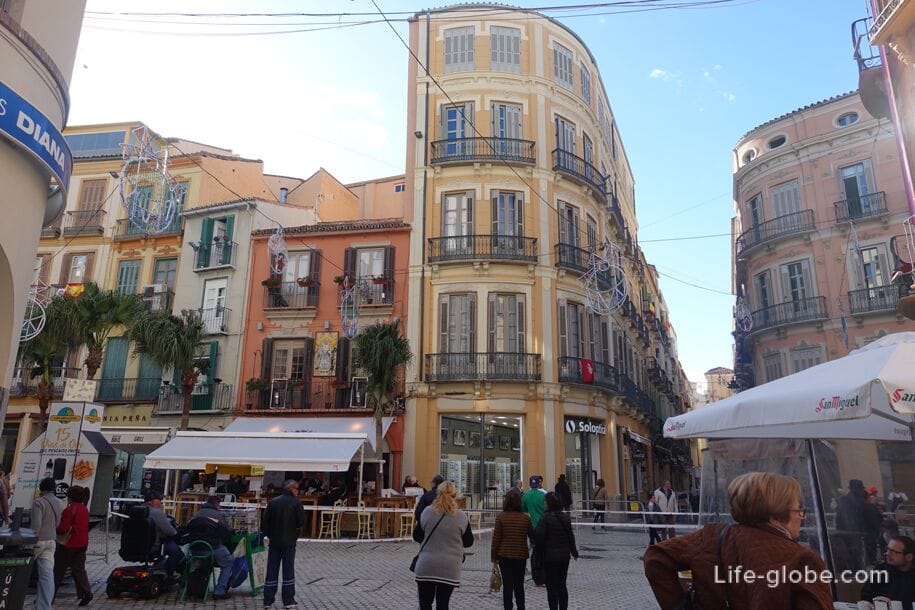

The main square in the historic centre of Malaga is Constitution square (Plaza de la Constitución). This is perhaps the largest and most visited square in the historic centre of the city. Plaza de la Constitución has been the heart of the old quarter since the founding of Malaga. Until 1812 Constitution square was called plaza Mayor.
On the square spend holidays and various city events, and on Christmas eve and New year's eve on this very square set the main city Christmas tree.

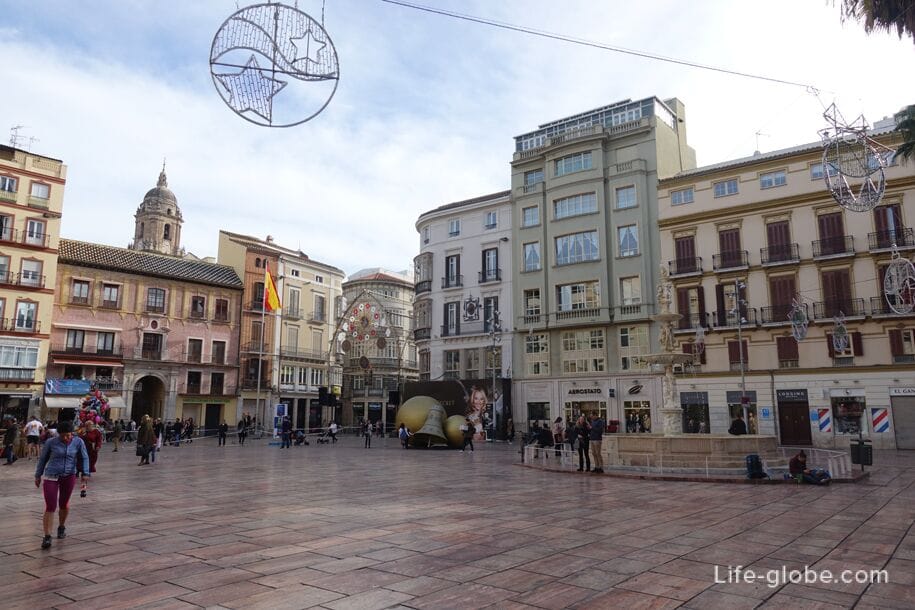
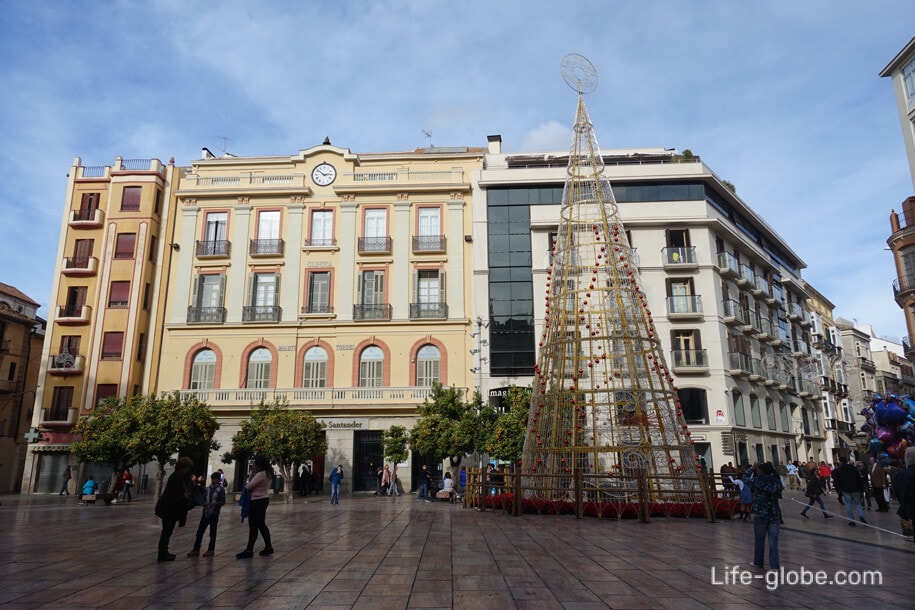
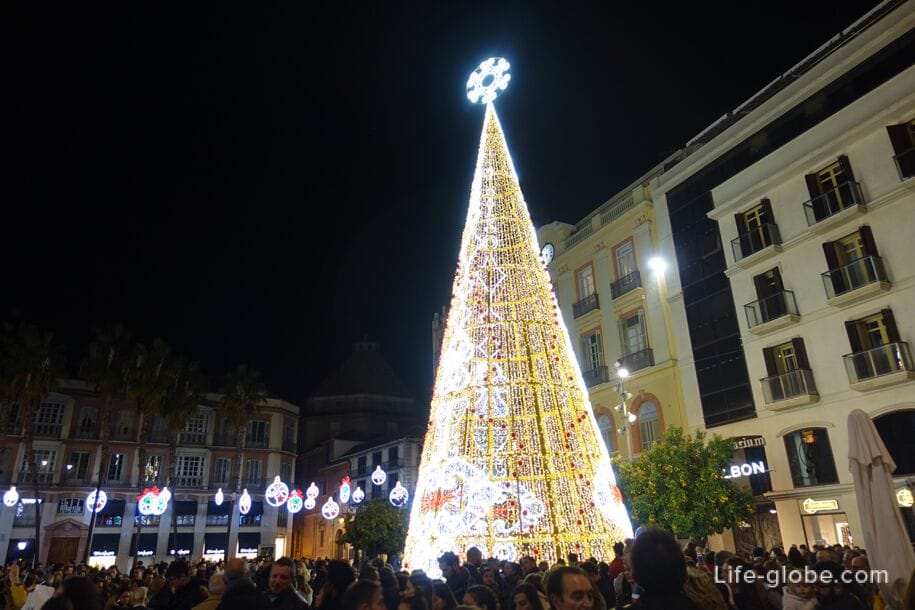
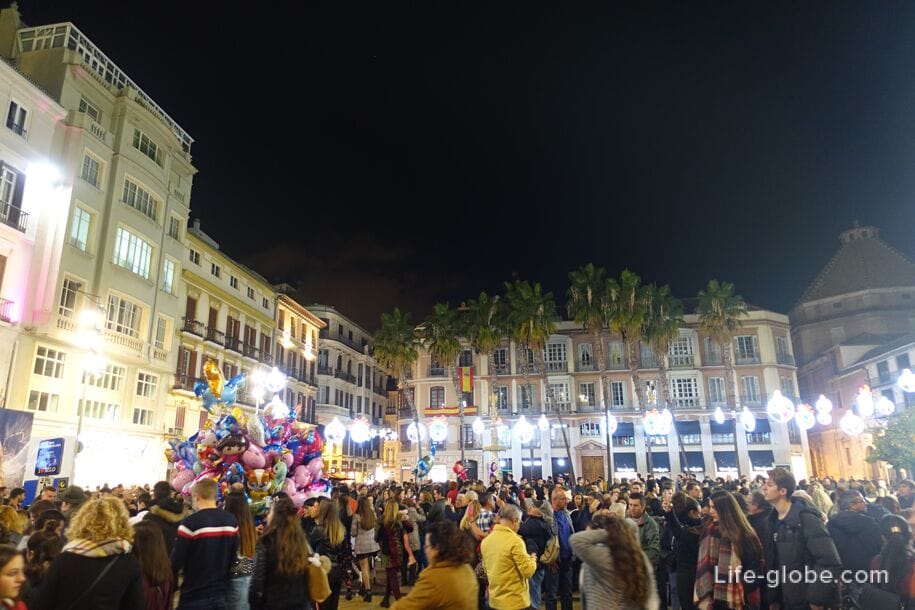
Decoration Constitution square stands the fountain of Genoa (Fuente de Génova). Marble fountain of the 16th century - a vivid example of the Renaissance style.
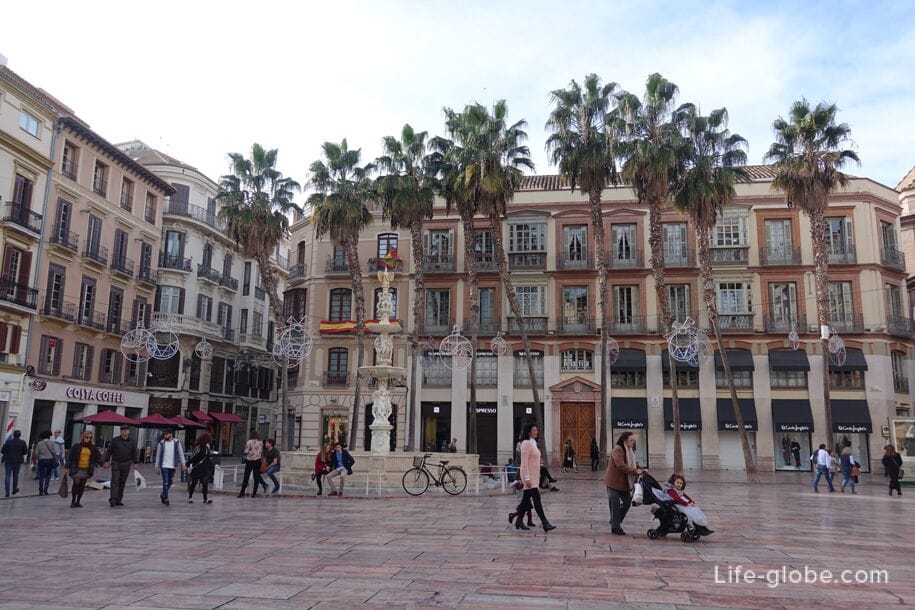
From the Constitution square, originates the most popular and elite street in the old part of Malaga Marques de Larios (Calle Marqués de Larios). This street is not long, there are many shops and boutiques on it, street performers perform, entertaining local residents and visitors. On the eve of the main winter holidays, the street is decorated with a beautiful ensemble of light compositions.
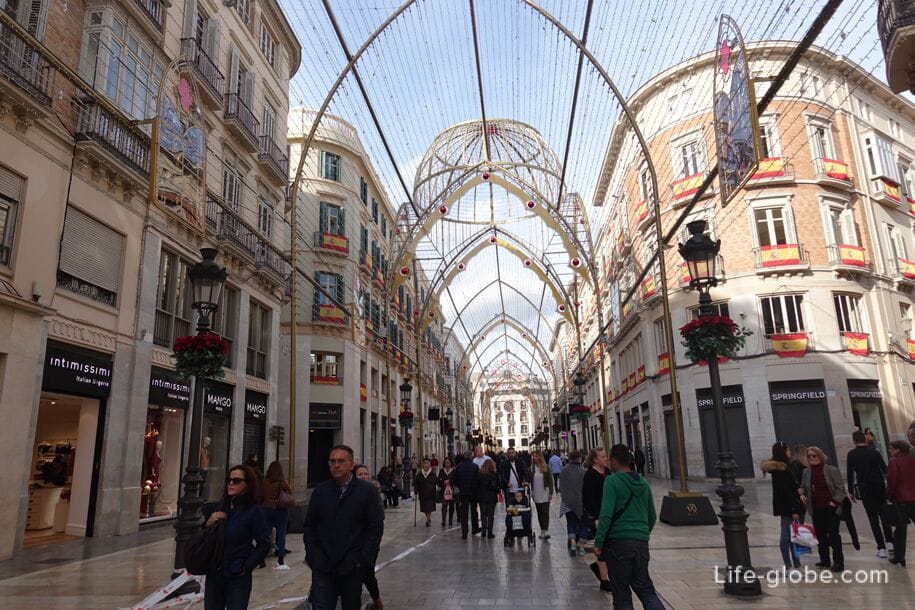
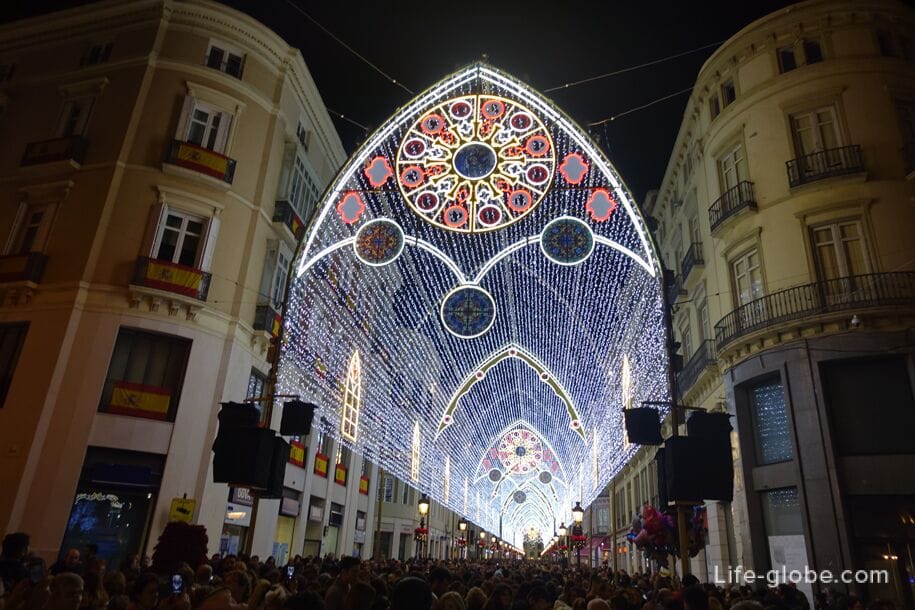
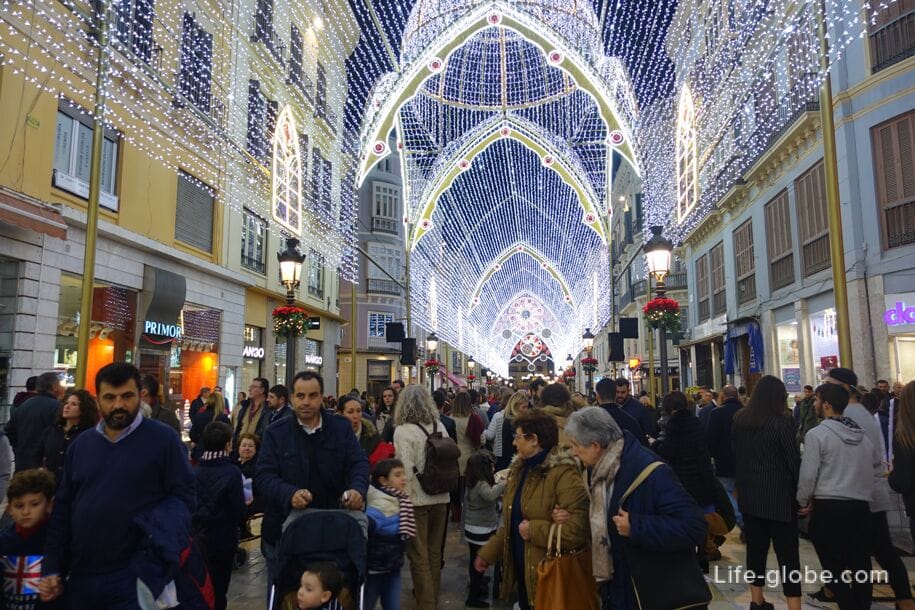


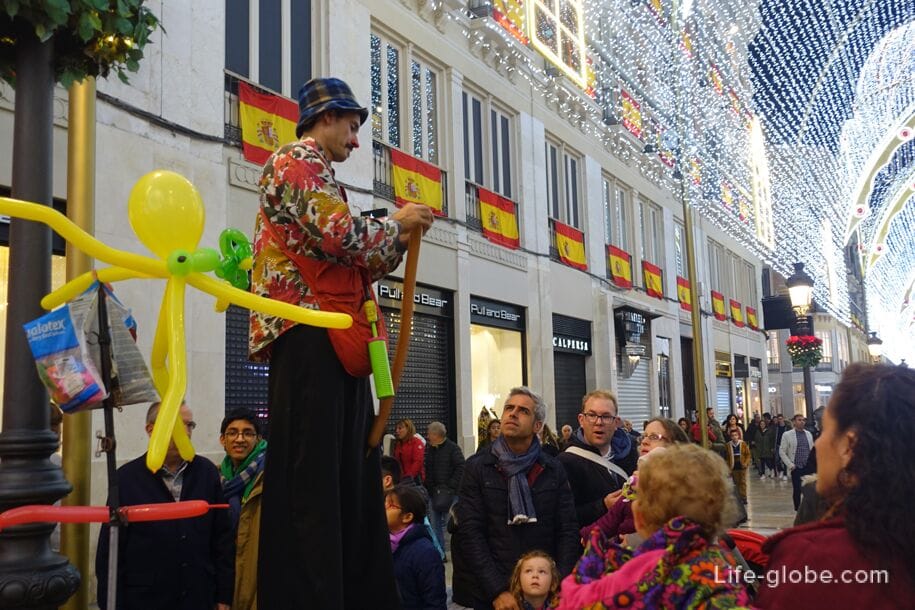
Ends Larios street, the near the streets of Alameda Principal, where there is a monument to the Marquis de Larios (Monumento Marqués De Larios), followed by Plaza de La Marina and the port of Malaga.

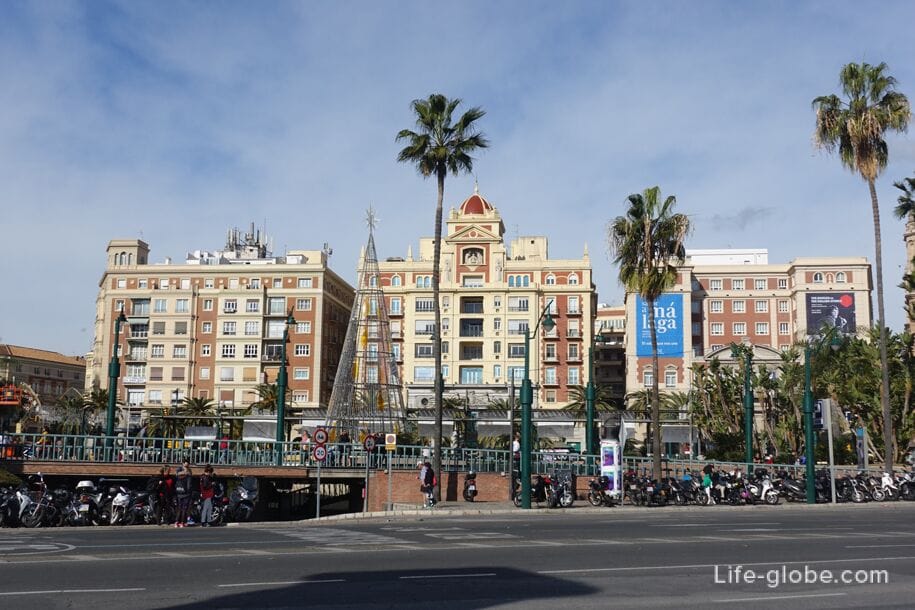
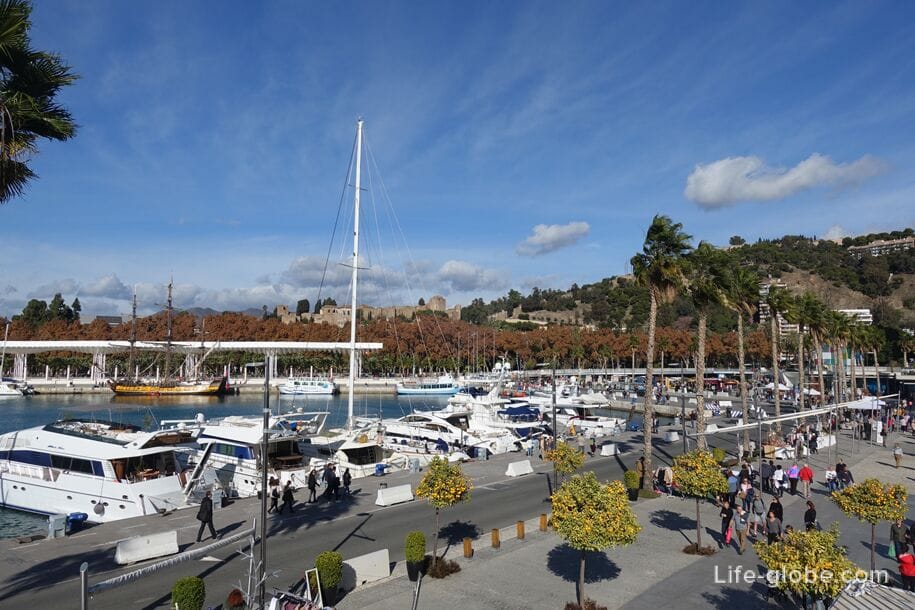
Parallel to the street Marques de Larios, another remarkable and picturesque street of the old town of Malaga - street Puerta del Mar (Calle Puerta del Mar)

The area Felix Saenz (Plaza de Felix Saenz), where is a historic building Sagasta 5 Guerrero Strachan.

The streets near Puerta del Mar, you can see the Catholic Church Iglesia de San Juan Bautina (Iglesia de San Juan Bautista). The origin of the parish of St. John the Baptist dates to the time of the conquest of the city by the Catholic kings in 1487. It was one of four parishes (along with Santiago, the Holy Martyrs and Sagrario) into which the city was divided after its conquest by Christians. Its current appearance, including the painted facade, the Church acquired as a result of various reconstructions carried out in the 18th century. One of the factors a thorough reconstruction of the Church was an earthquake in 1680.
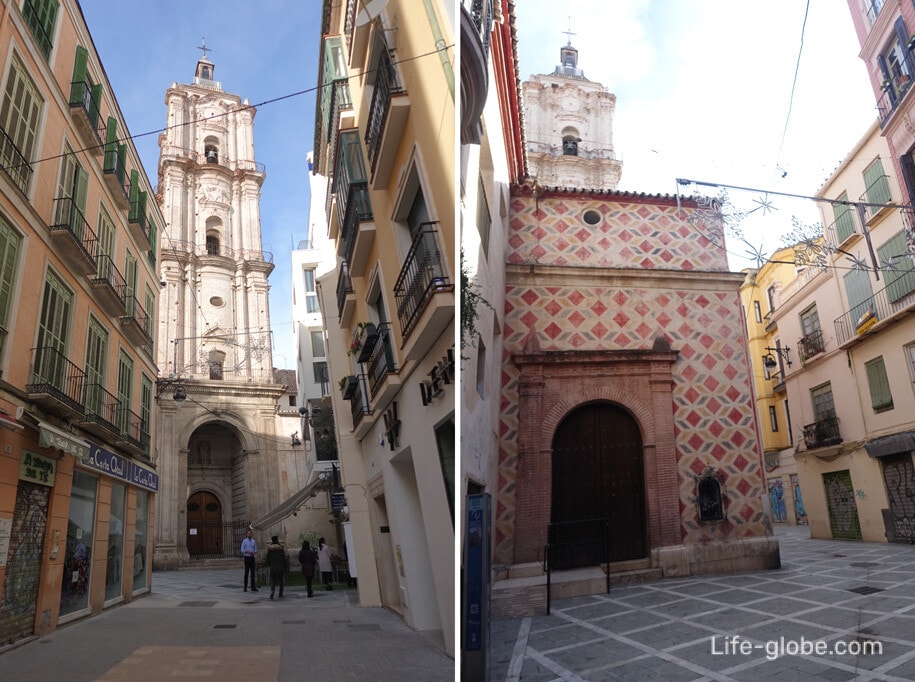
Cathedral of Malaga La Catedral (Catedral de Málaga), his full name sounds like Cathedral of the Holy virgin (Catedral de la Encarnación de Malaga) is the most famous, monumental, beautiful and memorable sights of Malaga.
Malaga Cathedral is considered the pearl of the Renaissance in Andalusia. The majestic building of the Cathedral stands out against the background of other, low and less refined buildings of the old city, and the tower of the Cathedral (by the way, she's only one, the known data on the construction of the second tower did not have enough money) can be seen from many points of old Malaga.
The construction of the cathedral lasted from about 1530 until the 17th century. Although the cathedral remained incomplete, as already said, there is no south tower, as well as final elements in the upper part of the main facade. However, at present, the absence of one tower is no longer perceived as a flaw or incomplete construction, but as a kind of exquisite highlight, thanks to which the cathedral became so recognizable.
Due to the lack of one tower to the people of Malaga Cathedral, nicknamed "La Manquita", which means "The One-Armed Lady". Inside is the Cathedral Museum.
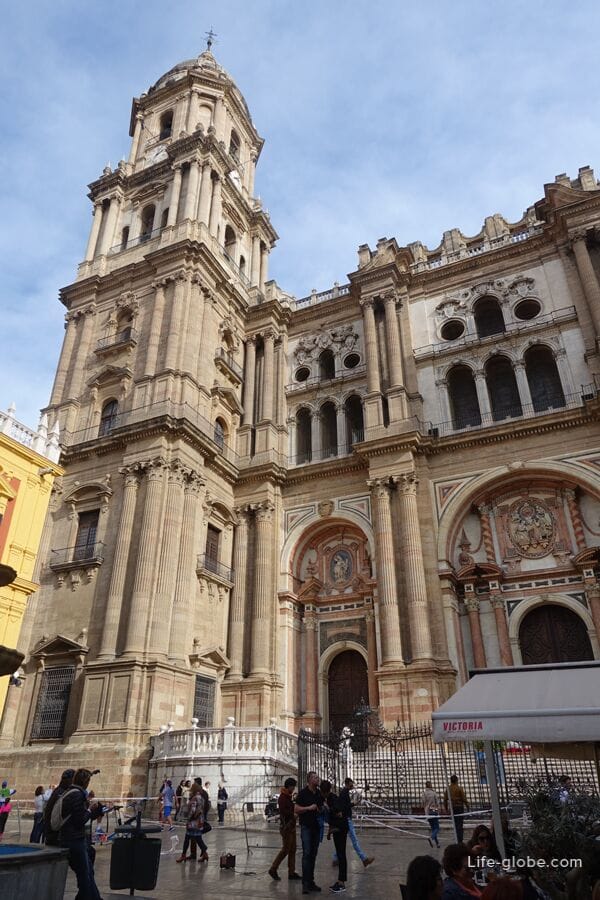
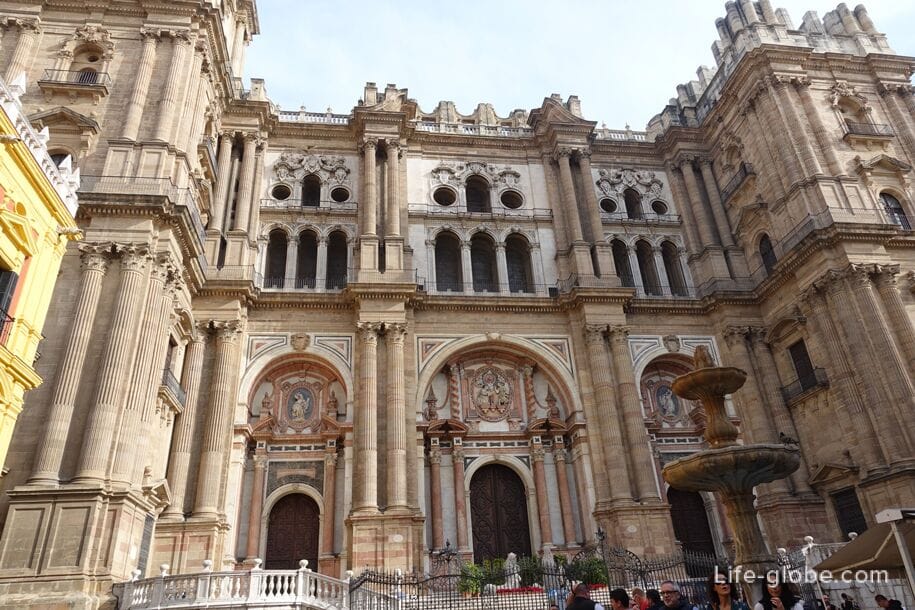
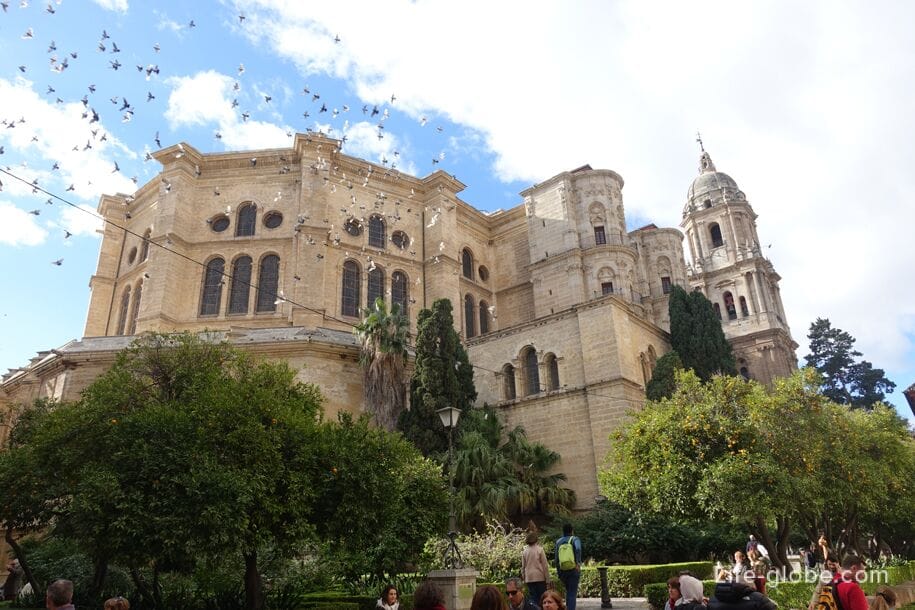
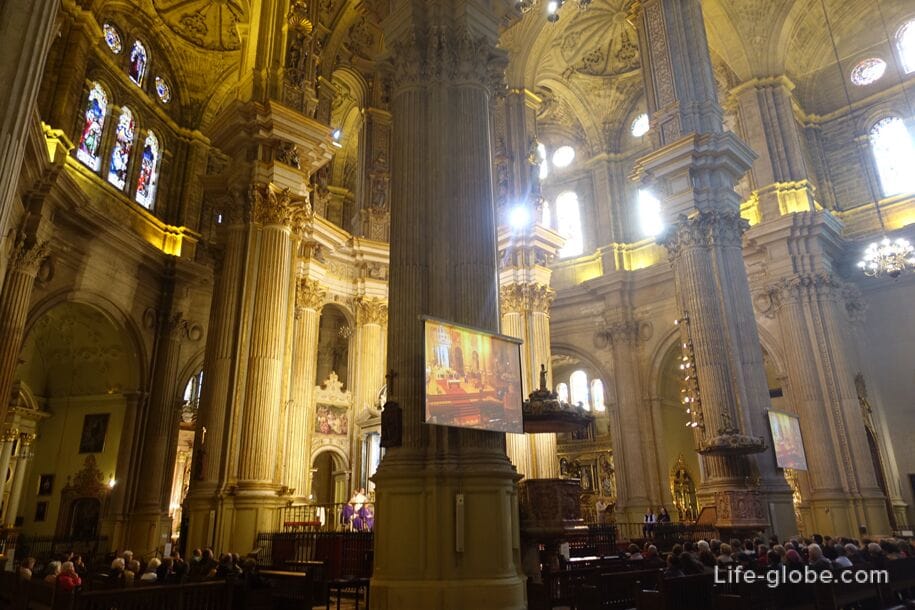
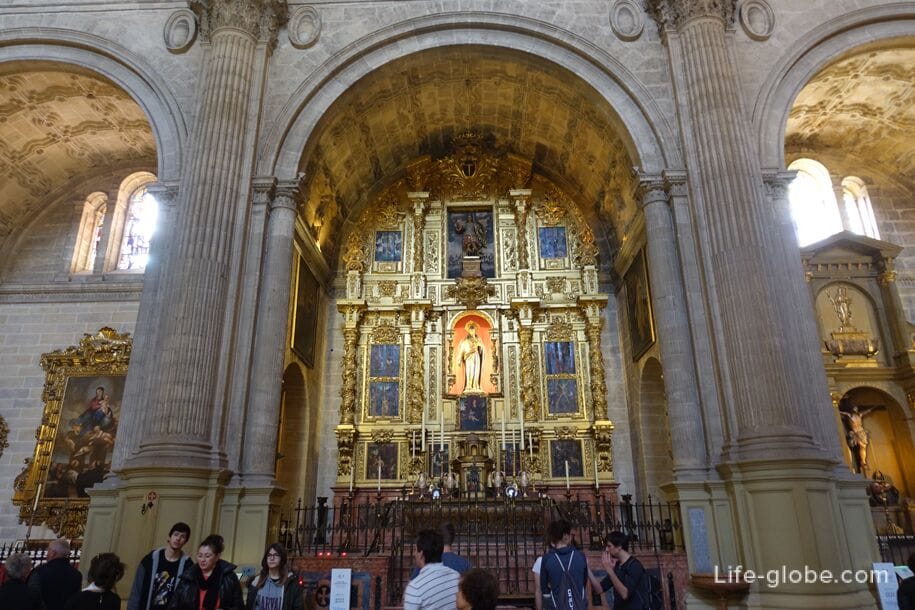

In front of the main entrance to the Cathedral of Malaga is a small area Obispo (Plaza del Obispo), a remarkable fountain in the center and the Episcopal Palace (Palacio Episcopal). The building of the Palace, which can be seen at present, is the object of cultural heritage of Spain, it was built in 1762. The Palace is one of the best examples of civil architecture of Malaga. Special attention is paid to the design of the main entrance on the main facade, designed in the Baroque style and in the shape of balconies and the altar, and decorated with pink columns. Currently the building houses the Diocesan Museum of sacred art.
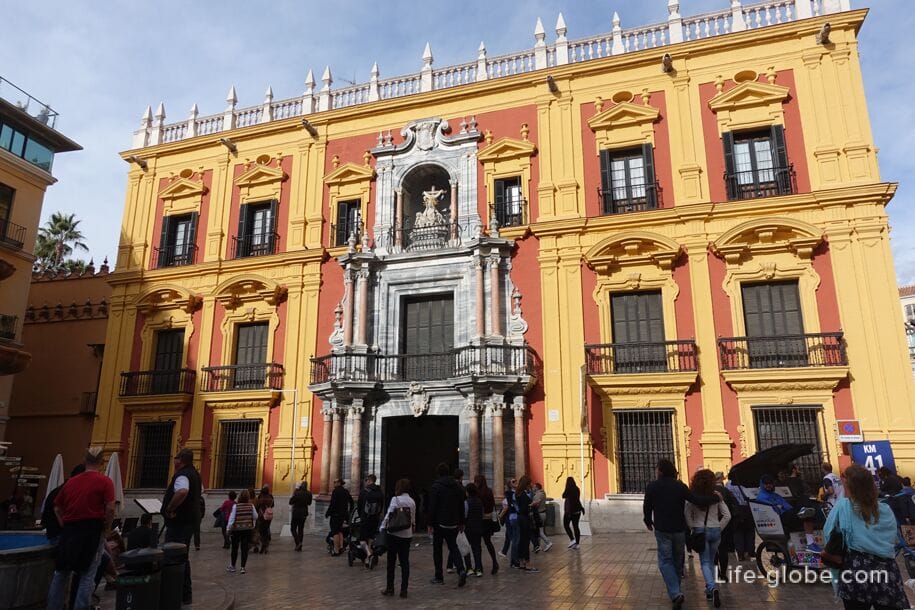
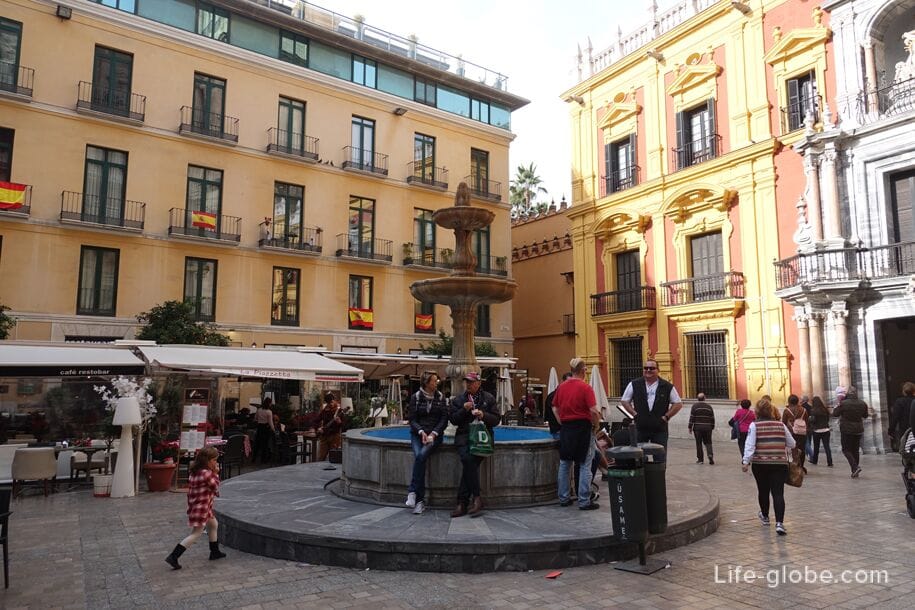
Roman theatre (Teatro Romano de Málaga), located at the foot of the hill of Gibralfaro, near the Alcazaba, on the streets of Alcazabilla. The Roman theatre dates from the 1st century BC at the time Malaga was part of one of the Roman provinces. For its intended purpose theatre used until the 3rd century BC Later, when Malaga was conquered by the Muslims, the theater has lost its basic functions and turned into a quarry. It was then that the theater began to undergo a Grand devastation, many parts of the theater went to the construction of the neighboring castle - Alcazaba. A striking example of the use of the Roman theatre the construction of the fortress, preserved to our days, are input to Column gate of the Alcazaba.
To all of the above, it should be noted that the ancient attraction, pretty well preserved. Spectators ’seats and a round platform (stage) where performances took place are vividly represented.


Just behind the Roman theater you can see the high ancient walls. It is here that originates the monumental ensemble of málaga - Alcazaba fortress and Gibralfaro. Both locks have a convenient location, they are close to each other.
Of the two fortresses of Malaga, the Alcazaba is the best preserved, so it is probably more interesting to visit, while the Gibralfaro less fortunate, she was, for the most part, only fortified defensive walls, gates and towers. However, the view of Malaga, opening from the walls of the Gibralfaro, just gorgeous.
The Alcazaba is an incredibly impressive eponymous castle, built in the 11th century, was once the Palace-fortress of the Muslim rulers of the city. The fortress Gibralfaro same applies to the construction of the 14th century. Read more about the Alcazaba fortress and Gibralfaro castle...
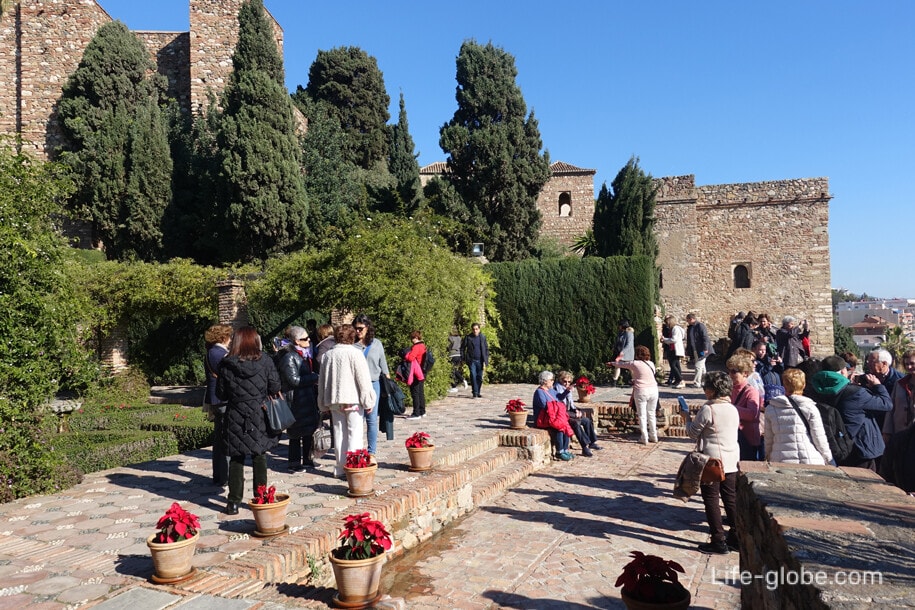
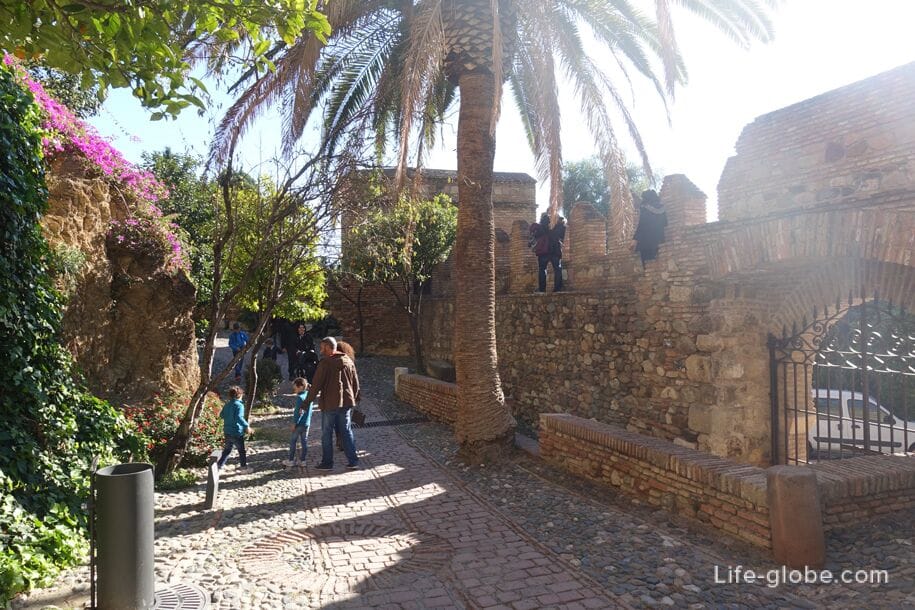
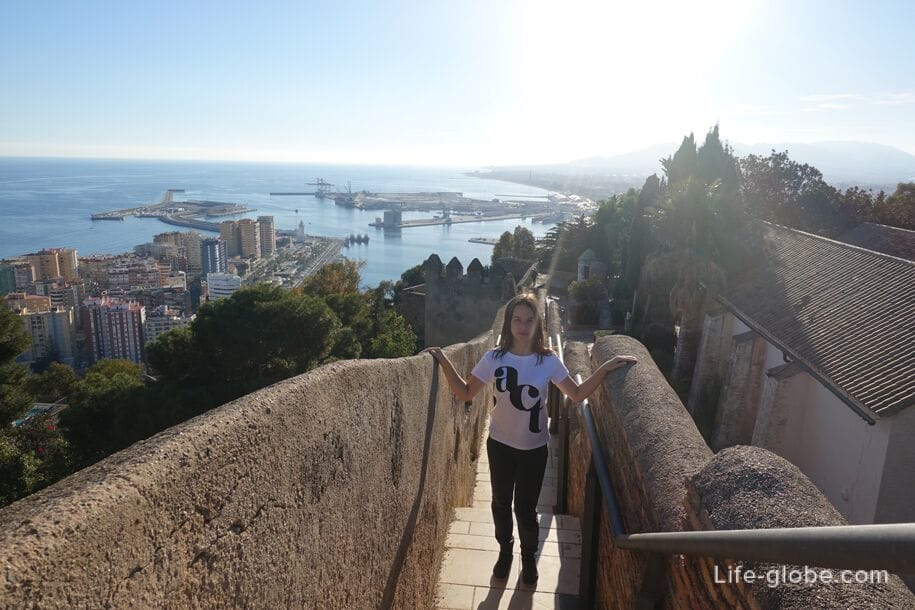
Uncibay square (Plaza de Uncibay) with an interesting obelisk in the center
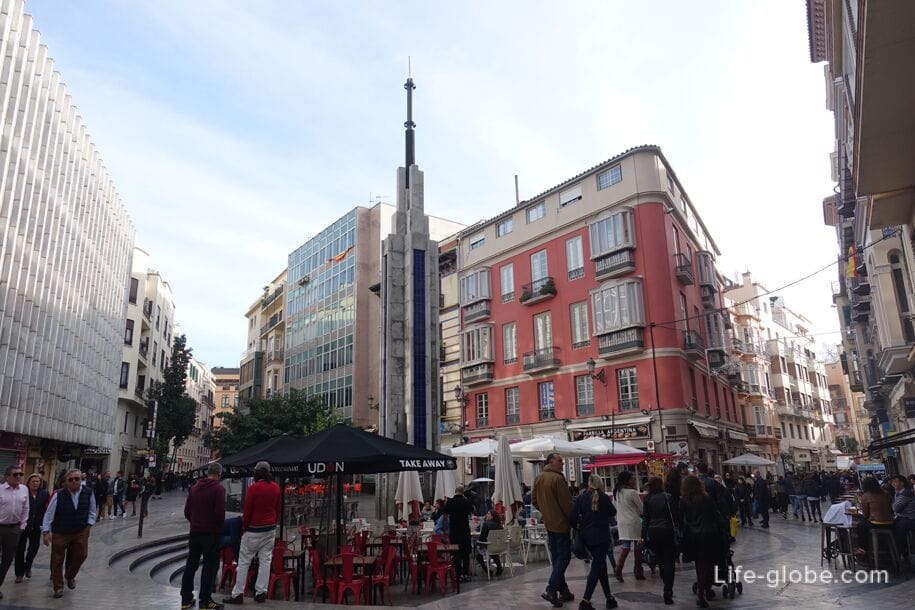
Heritage Museum Center the Art of Bullfighting (Centro de Arte de la Tauromaquia), located on Siglo Square (Plaza del Siglo). 8 halls of the museum, located on three floors, tell about the culture and history of bullfighting.
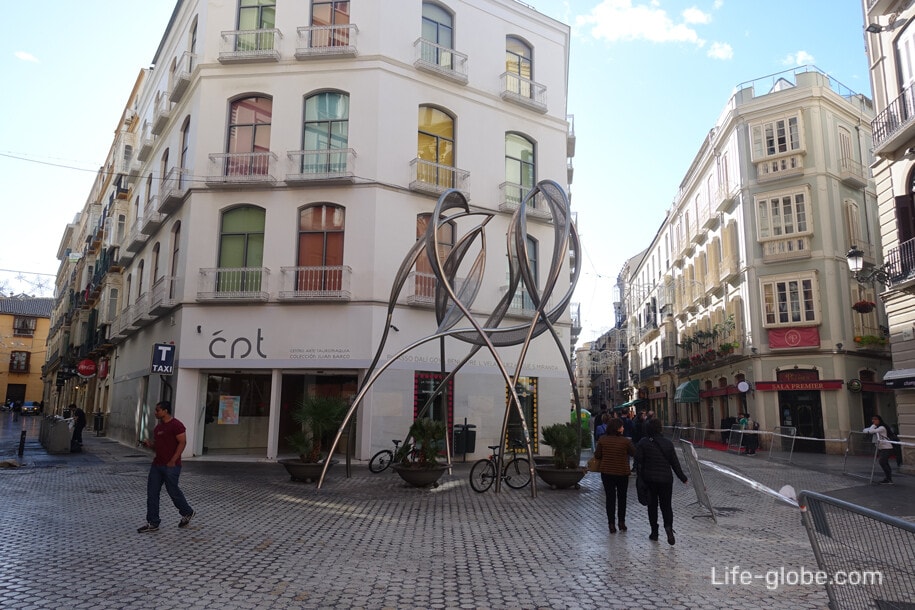
The Merced square (Plaza de la Merced), also known by other names such as the market square or the area of irrigation, is one of the most important squares in the city and is also known as the birth place of Picasso. In the center of the square is the monument to General Torrijos, a large obelisk that characterize this place. In the 15th century, this place is a public market, but in the late 19th century, the area acquired recognizable traits nowadays and has become a place of recreation and entertainment for residents and visitors alike. Near the square is the House-Museum of Picasso and the old scene in the capital of the Costa del Sol, the venue of the Málaga film festival, the Cervantes theatre (Teatro Cervantes).
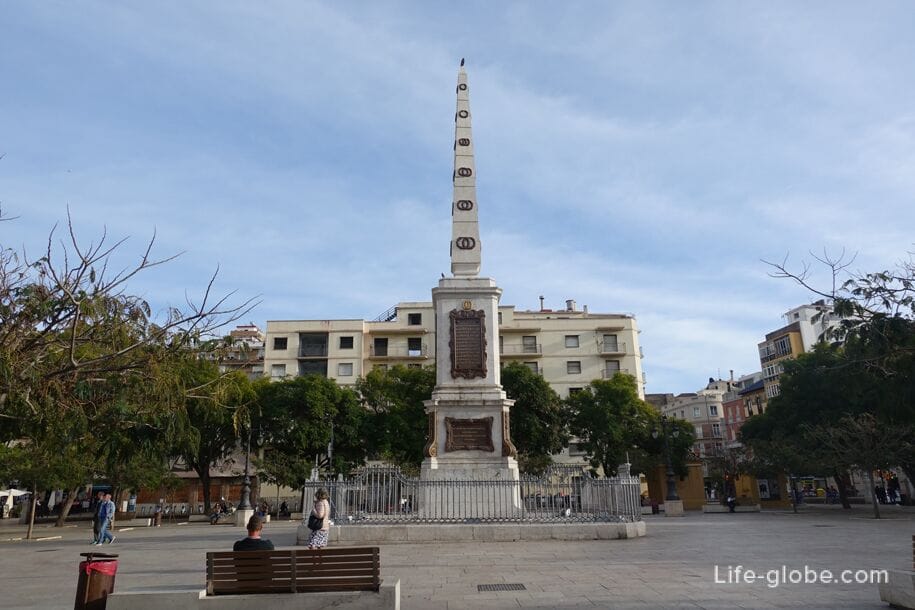
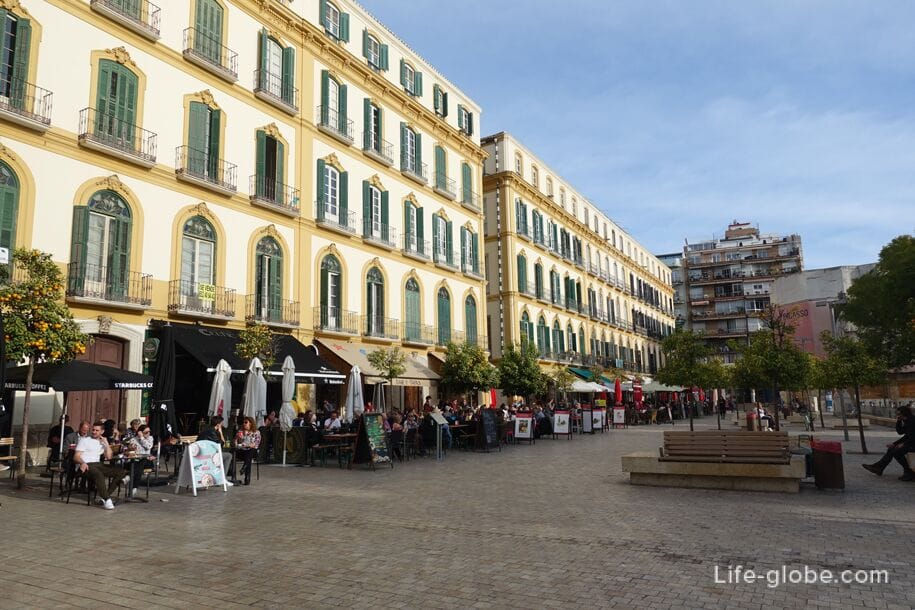
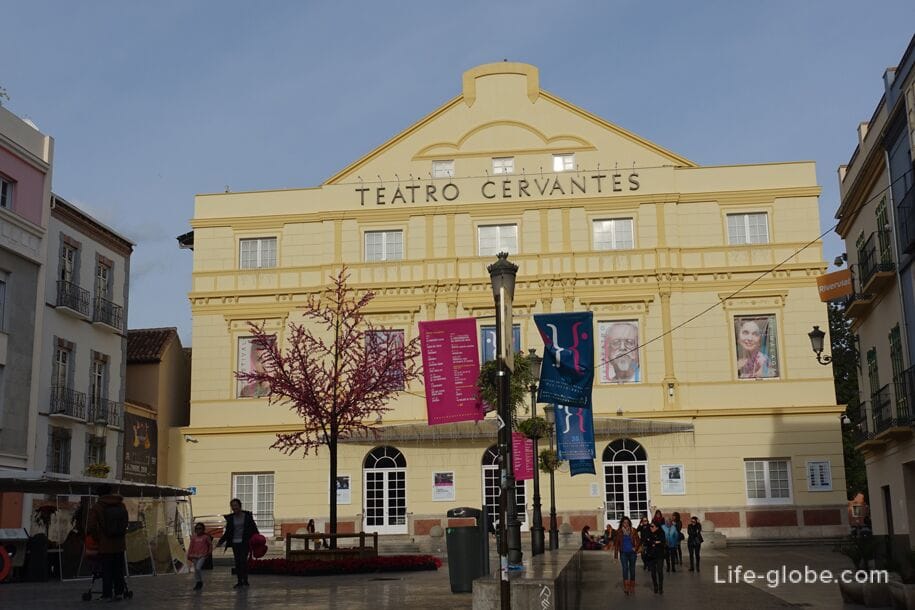
On the square in San Ignacio, you can see a beautiful monument of Gothic art of the Malaga Church of the sacred Heart (Iglesia del Sagrado Corazón de Jesus), Dating back to 1920.
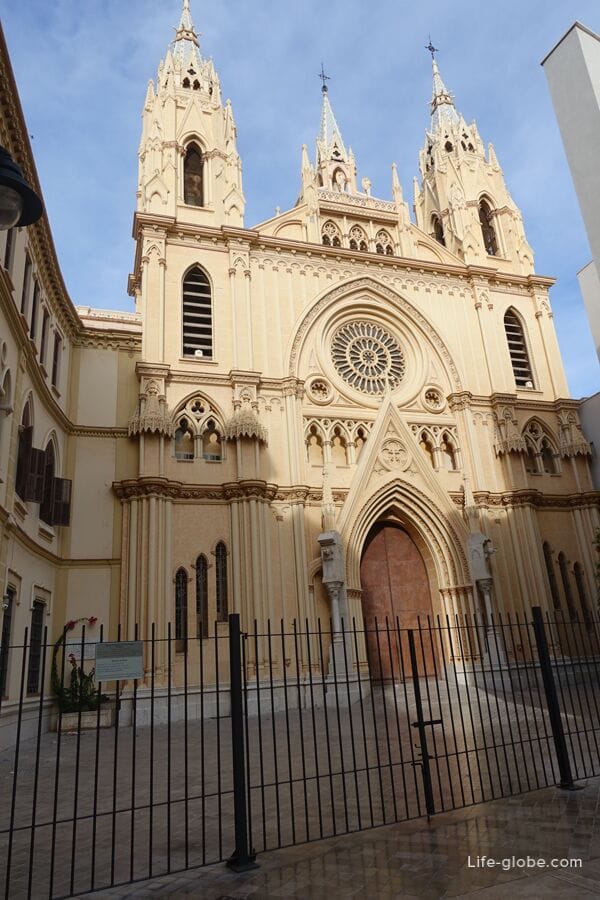
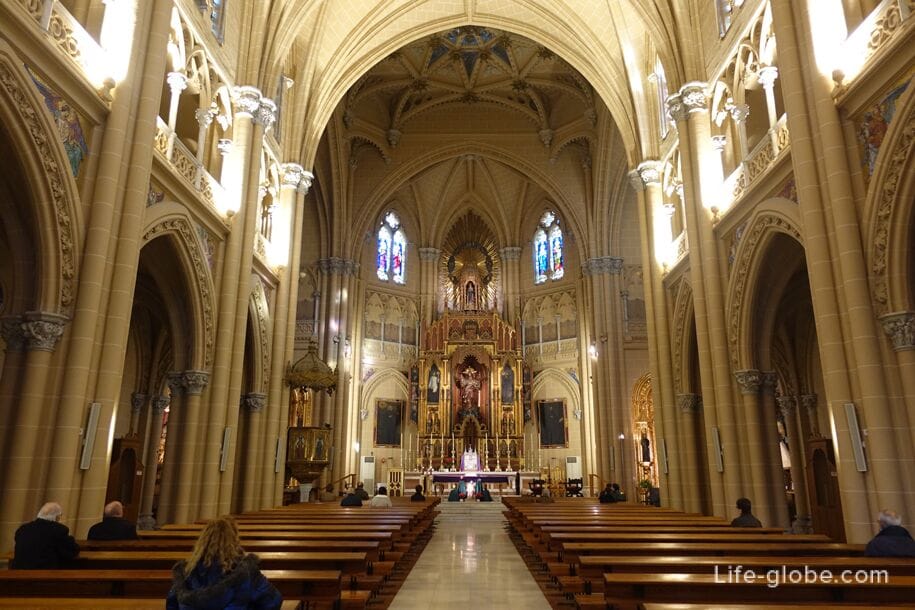
In addition, the old part of the town is still full of interesting surprises, among which are the museums and churches, interesting sculptures and a small, almost imperceptible square, strewn with an abundance of cafes, bars and restaurants.
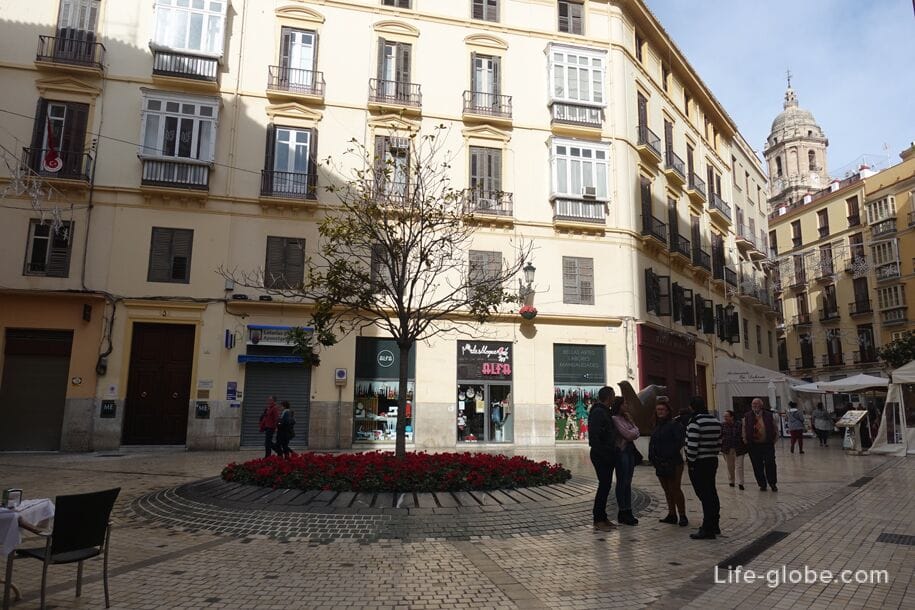

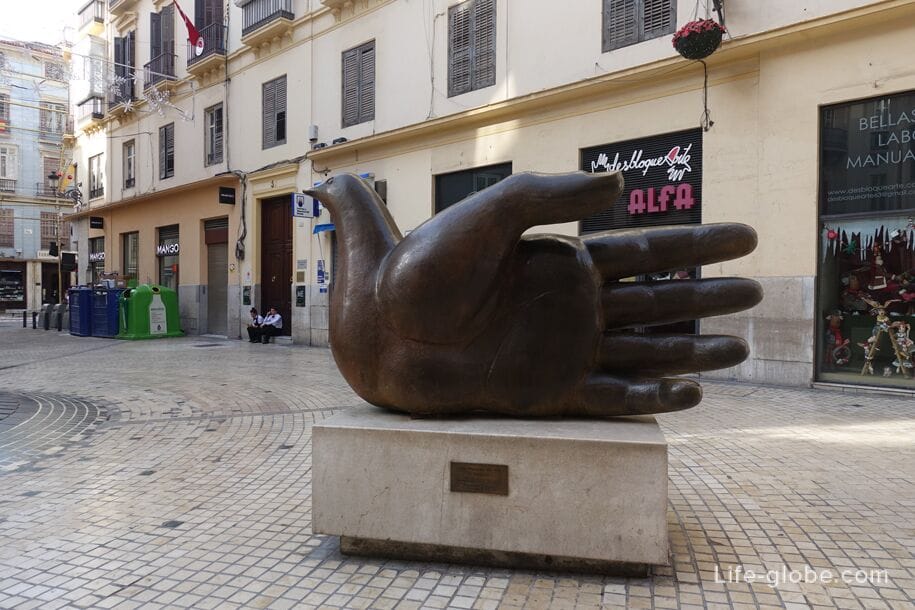
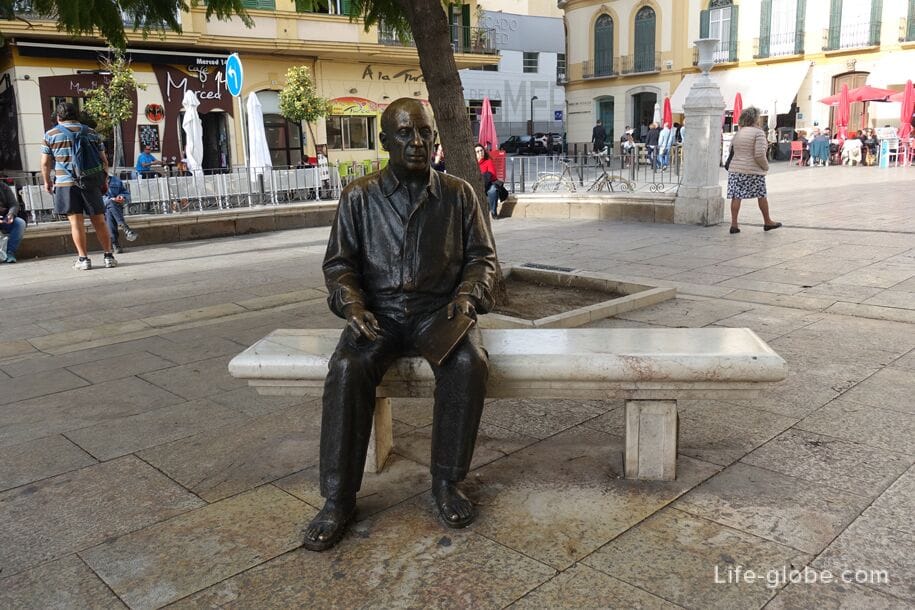
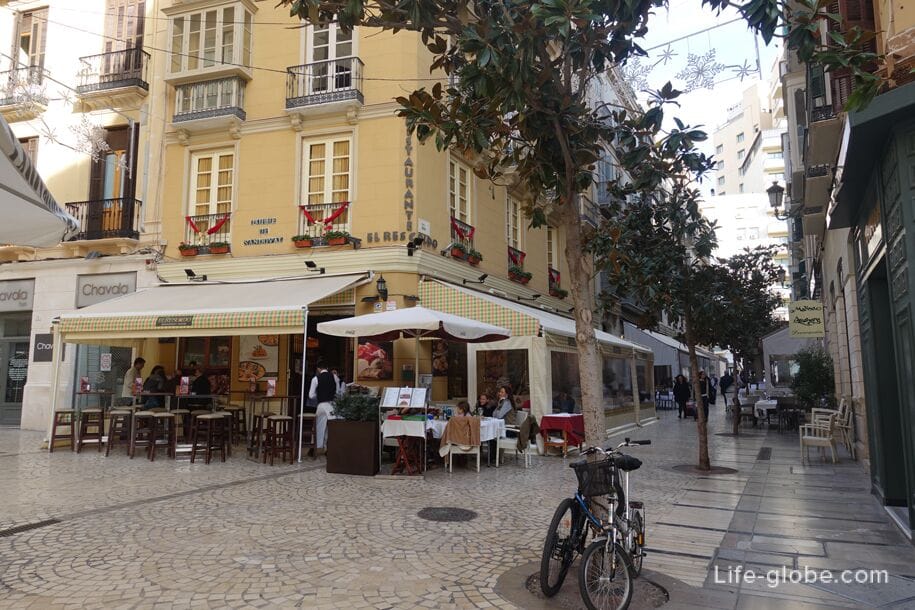
Photo streets of the old town of Malaga

